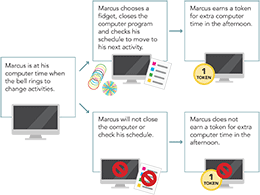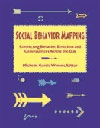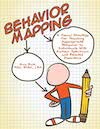Autism Center Grab and Go Resource Gallery of Interventions
Behavior/Contingency Maps
Explore behavior contingency maps, which show an individual that a positive behavior choice can earn a desired item/person/activity while a an undesirable behavior choice may earn a consequence. Behavior maps can be effective because they illustrate, in a visual way, the results of engaging in the desired and undesired behaviors. Behavior maps may also assist with decreasing challenging behaviors. Behavior Maps may or may not include images, depending on the individual's needs.
Examples

Behavior Mapping
Book Suggestions

Social Behavior Mapping: Connecting Behavior, Emotions and Consequences Across the Day
Winner, M.G.
Social Behavior Mapping is a cognitive behavior strategy that teaches individuals about the specific relationship between behaviors, others' perspectives, others' actions (consequences) and the student's own emotions about those around him or her. SBM is a visual tool that displays these abstract concepts through a flow chart. Intended for 3rd-12th grade students, this strategy is most effective for students with solid language skills.

Behavior Mapping: A Visual Strategy for Teaching Appropriate Behavior to Individuals with Autism Spectrum
Buie, Amy
Grounded in evidence-based practice, Amy Buie's Behavior Mapping is a groundbreaking way of motivating children to make good choices and learn new skills. Better yet, due to its visual nature, this simple-to-implement strategy is effective for a range of students, regardless of age and ability level. Supported by examples and real-life vignettes, four major categories of maps are presented: Consequence Maps, Complex Behavior Maps, Language Maps, and Problem-Solving Maps covering major classroom challenges. For ease of use, owners of the book may download Behavior Map templates.
Additional Resources
Contingency Maps for Behavior Problem-Solving (Free)
Website: Autism Classroom Resources
Contingency Map Templates for Behavior Problem Solving (Free)
Website: Teachers Pay Teachers